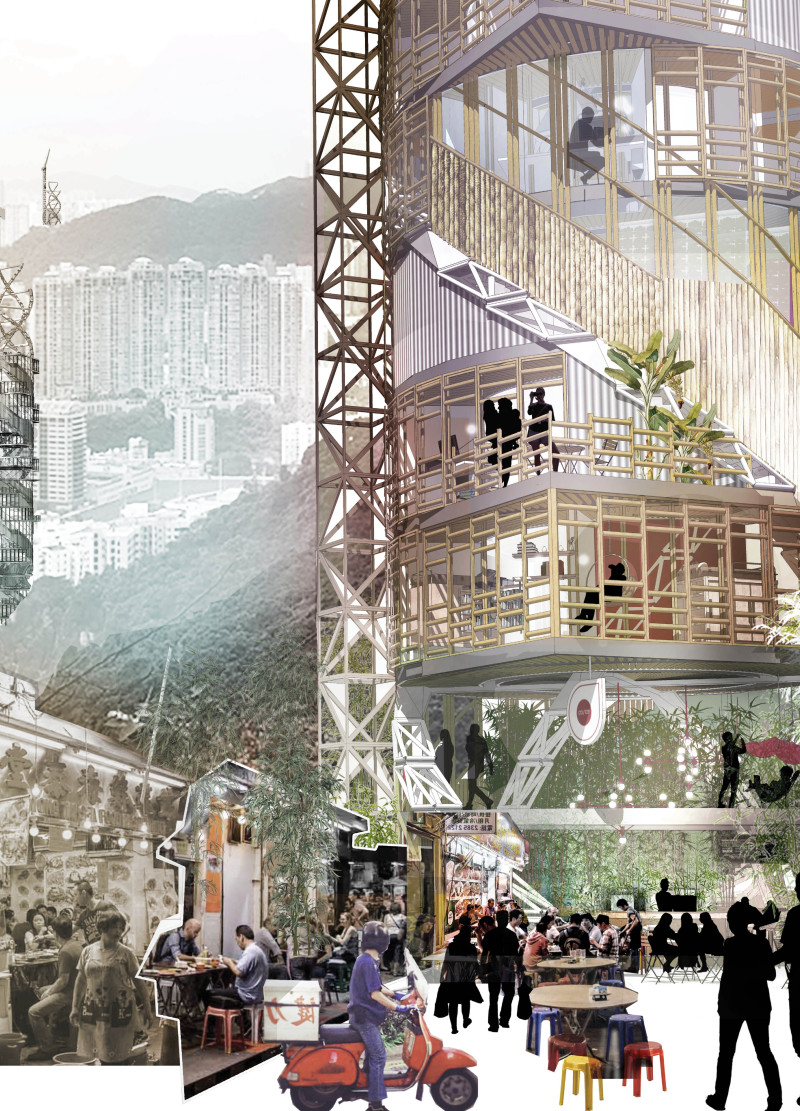5 key facts about this project
The design employs a Helix Tower structure that allows for vertical communal living. This creates an integrated residential environment offering both private spaces and communal facilities. The project focuses on optimizing land use by transforming interstitial urban areas into valuable housing resources. Through its modular and scalable design, CO/OPportunity supports adaptability, fostering spaces conducive to diverse communal and personal needs.
Innovative Design Approaches
What distinguishes CO/OPportunity from traditional housing projects is its emphasis on community-centered design. The incorporation of shared spaces such as urban farms, workshops, and communal gathering areas encourages social interaction and collaboration among residents. By prioritizing mixed-use facilities, the design acknowledges the intertwined nature of living and working within urban settings.
The project's funding strategy is equally noteworthy. It utilizes community investment models that allow residents to participate as equity stakeholders. This approach fosters a sense of ownership and strengthens community bonds while ensuring that housing remains affordable and accessible.
Sustainable materiality plays a crucial role in the project's design. The use of bamboo, steel, fiberglass, PVC membrane, and corrugated fiberglass contributes to both the structural integrity and environmental resilience of the building. These materials not only reduce resource consumption but also enhance the aesthetic qualities of the architecture, aligning with sustainable construction practices.
Adaptive and Functional Spaces
The Helix Tower enables a stacking of residential units that can expand or contract based on demand, which provides a flexible housing solution. The architectural plans reflect this adaptability, featuring designs that prioritize efficiency without compromising on quality of life. Each residential floor is designed to serve multiple functions, thereby enhancing usability and reducing the need for extensive land use.
The architectural sections of the CO/OPportunity project illustrate a commitment to innovative space utilization. Units are designed to cater to various lifestyles, with layouts that facilitate both private living and community interaction. This design philosophy promotes a holistic urban living experience, encouraging residents to engage actively in their environments.
To gain a deeper understanding of the CO/OPportunity project, including its architectural plans, design sections, and functional layouts, readers are encouraged to explore the complete project presentation. Insights into the architectural concepts and the environmental considerations further showcase how this project effectively addresses the challenges of housing in a rapidly urbanizing world.


























